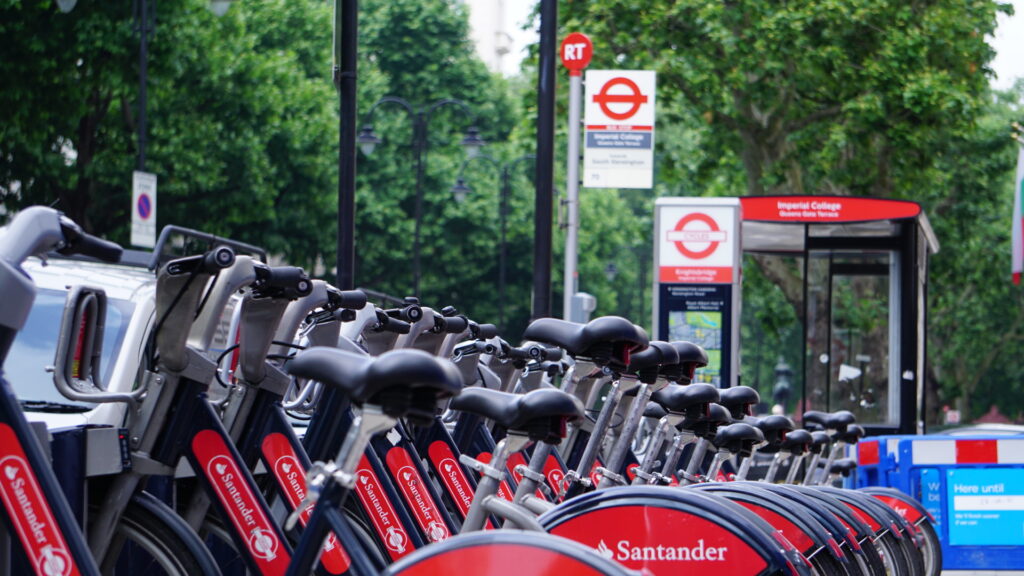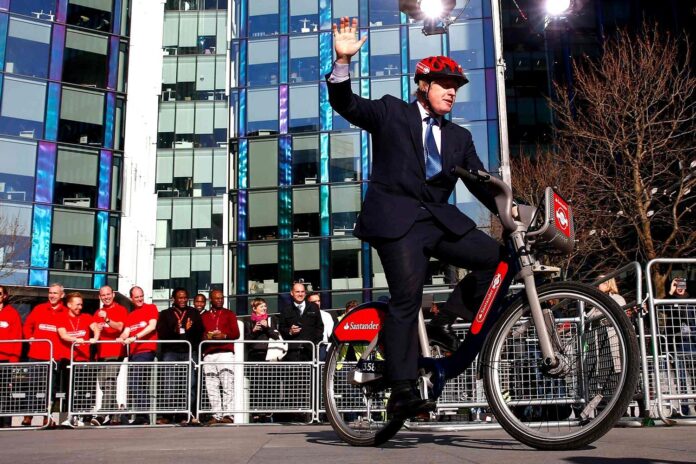Boris Johnson resigns. Let us leave the analysis of the performance, successes, and failures of the Boris Johnson government to the professionals. For us, lovers of active travel, his name is forever inscribed in the history of London as the person who launched the first bike hire in the British capital.
In 2010, when Boris Johnson was the mayor of London, the first bike-sharing service appeared in the British capital.
Santander Cycles – “Boris Bikes”
The scheme’s bicycles are popularly known as Boris Bikes, after Boris Johnson who was Mayor of London when the scheme began operating. The operation of the scheme is contracted by Transport for London to Serco
While the cycles are still known by many as “Boris Bikes”, it was Mr Johnson’s predecessor Ken Livingstone who set up a feasibility study into the creation of a cycle hire scheme in London, having been inspired by one in Paris.
The scheme was launched by Mr Johnson on 30 July 2010, when he announced that he wanted the city to be “filled with thousands of gleaming machines”, which would “become as commonplace on our roads as black cabs and red buses”.
Ninety-three million hires
Since their launch, the bikes had been hired an impressive 93,299,451 times by 30 June 2020 year, according to figures from Transport for London (TfL).
On 9 July 2015 when the entire Tube network was closed because of a strike, bikes were hired 73,094 times, making it the busiest day since the scheme began. The day which had the fewest hires was 19 December 2010 with just 2,764. Presumably it was cold and miserable that day.
The occasional famous face has been spotted using one to get around the capital. For some it may have been a photo opportunity, but for others they were just a convenient mode of transport.

The scheme expands
When the scheme began there were 350 docking stations and 5,000 bicycles.
These days there are 781 docking stations and, with another 1,700 new cycles set to join the ranks, there will soon be more than 14,000 of them on the streets.
The sturdy aluminium bikes have three-speed gears, a bell and a basket. The first ones were fitted with dynamo-powered lights but late 2017 saw the introduction of new cycles that feature a gel saddle, tyres with puncture prevention, improved lighting and Bluetooth.
Of the bikes first rolled out 10 years ago, 3,993 are still on the road today, although their parts will have been replaced to ensure they are safe and working well. A total of 6,654 cycles have been decommissioned since the scheme began because of reasons such as they’ve been lost, stolen or damaged beyond repair.
The scheme works by users taking a bike from a docking station and then being able to leave it at any of those in the capital – assuming there is a space free.
Initially, only signed up members who paid an annual fee and had a fob which was sent to them through the post could hire the bikes. The technology soon changed and while yearly membership is still available, users are also able to just turn up at a docking station or use the official app to hire bikes.
Barclays initially sponsored the scheme, which was worth £5m a year and led to the bikes being given their original blue livery.

In February 2015, it was announced that Santander would take over sponsorship and the following year the bikes became red. It also meant they gained their current official name – Santander Cycles.
Back in 2010, people paid an annual fee of £45 to be a member along with a usage charge if a bike was taken out for more than 30 minutes. For up to an hour it cost £1, 90 minutes cost £4, and 24 hours cost £50.
Annual membership these days costs £90 a year. Journeys less than 30 minutes long are still not paid for but it costs £2 for every 30 minutes after that.
Those using hire and ride without membership pay £2, which allows them to make an unlimited number of journeys of up to 30 minutes within a 24-hour period. Journeys that take longer than 30 minutes cost £2 for each extra 30 minutes.
There has been a huge increase in the number of people using the bikes over the past few yers. The scheme now covers 100 sq km (38.6 sq miles) of London, making it one of the largest cycle hire schemes in Europe.
Thank You, Mr Johnson!
Credit: BBC
See more news about health and active leisure on our channels: FB Inst
















